Node Temperature of the Coupled High-Low Energy Grade Flus Gas Waste Heat Recovery System
Abstract
:1. Introduction
2. Research Foundation
2.1. Description of CWHRS
2.2. Problem and Method
3. Energy Grade and Energy Grade Balance Theory
3.1. Energy Grade
3.2. Energy Grade Balance Theory
4. Node Temperature of CWHRS
4.1. Heat Balance of Heat Exchangers in CWHRS
4.2. Node Temperature of the CWHRS
5. Node Temperature Calculation Case and Analysis
5.1. Node Temperature Calculation
5.2. Influence of IFT and IAT on Exergy Efficiency and EBC
5.2.1. Influence of IFT on Exergy Efficiency and EBC
5.2.2. Influence of IAT on Exergy Efficiency and EBC
6. Conclusions
- When the absolute value of EBC is the lowest, the node temperature of CWHRS is the ONT, and the system achieves optimal waste heat recovery. The ONT of the CWHRS of the 600 MW unit is about 115 °C under given conditions.
- With increasing node temperature of the CWHRS, the EBC first decreases, then increases. At about 115 °C, the smallest EBC was calculated and the system has the maximum exergy efficiency. The node temperature should be increased when the IFT is less than 360 °C and decreased when the IFT is more than 360 °C to achieve the ONT.
- With increasing IFT, the exergy efficiency of the CWHRS decreases and the EBC increases, and the node temperature should be decreased to obtain the ONT. The ONT should be decreased from about 135 °C to about 113 °C when the IFT increases from 335 °C to 380 °C, respectively.
- With increasing IAT, the exergy efficiency of CWHRS increases and the EBC decreases, and the node temperature should be decreased to obtain the ONT. The ONT should be decreased from about 144 °C to about 113 °C when the IAT increases from −10 °C to 35 °C, respectively.
- The node temperature is recommend as an adjustment parameter in a CWHRS to optimize waste heat recovery, and the ONT can be obtained by adjusting the bypass flue gas flow and water flow of AE.
- When IFT or IAT changes, according to the change trends of the ONT, adjusting the node temperature to a reasonable value is beneficial to ensure the rationality of waste heat use and efficient operation of CWHRS.
Author Contributions
Funding
Conflicts of Interest
References
- Li, Y.; Chang, S.; Fu, L.; Zhang, S. A technology review on recovering waste heat from the condensers of large turbine units in China. Renew. Sustain. Energy Rev. 2016, 58, 287–296. [Google Scholar] [CrossRef]
- Ye, T. Thermal Power Plant, 4th ed.; China Electric Power Press: Beijing, China, 2012; pp. 7–8. ISBN 9787512329317. (In Chinese) [Google Scholar]
- Fu, Y.; Sun, J.; Cai, W.; Jiang, H.; Jia, M.; Miao, Y.; Zhang, Y.; Wang, G. Analysis on technology of waste heat recovery from exhaust gas of power boiler using low-pressure economizer. Huadian Technol. 2013, 35, 64–66. (In Chinese) [Google Scholar]
- Jouhara, H.; Khordehgah, N.; Almahmoud, S.; Delpech, B.; Chauhan, A.; Tassou, S.A. Waste heat recovery technologies and applications. Therm. Sci. Eng. Prog. 2018, 6, 268–289. [Google Scholar] [CrossRef]
- Wang, C.; He, B.; Sun, S.; Wu, Y.; Yan, N.; Yan, L.; Pei, X. Application of a low pressure economizer for waste heat recovery from the exhaust flue gas in a 600 MW power plant. Energy 2012, 48, 196–202. [Google Scholar] [CrossRef]
- Wang, C.; He, B.; Yan, L.; Pei, X.; Chen, S. Thermodynamic analysis of a low-pressure economizer based waste heat recovery system for a coal-fired power plant. Energy 2014, 65, 80–90. [Google Scholar] [CrossRef]
- Huang, X.; Shi, Y.; Sun, F.; Lu, W.; Qi, L. Practice of low pressure economizer installed in 670 t/h coal-fired boiler to reduce the exhaust gas temperature. Electr. Power 2008, 41, 55–58. (In Chinese) [Google Scholar]
- Stevanovic, V.D.; Wala, T.; Muszynski, S.; Muszynski, S.; Milic, M.; Jovanovic, M. Efficiency and power upgrade by an additional high pressure economizer installation at an aged 620MWe lignite-fired power plant. Energy 2014, 66, 907–918. [Google Scholar] [CrossRef]
- Xu, G.; Xu, C.; Yang, Y.; Fang, Y.; Li, Y.; Song, X. A novel flue gas waste heat recovery system for coal-fired ultra-supercritical power plants. Appl. Therm. Eng. 2014, 67, 240–249. [Google Scholar] [CrossRef]
- Huang, S.; Li, C.; Tan, T.; Fu, P.; Xu, G.; Yang, Y. An Improved System for Utilizing Low-Temperature Waste Heat of Flue Gas from Coal-Fired Power Plants. Entropy 2017, 19, 423. [Google Scholar] [CrossRef]
- Liu, J.; Sun, F.; Ma, L.; Wei, W. Coupled high-low energy level flue gas heat recovery system and its application in 1000 MW ultra-supercritical double reheat coal-fired unit. In Proceedings of the ASME 2017 Power Conference Joint with ICOPE-17, Charlotte, NC, USA, 26–30 June 2017. [Google Scholar]
- Han, Y.; Xu, G.; Zheng, Q.; Xu, C.; Hu, Y.; Yang, Y.; Lei, J. New heat integration system with bypass flue based on the rational utilization of low-grade extraction steam in a coal-fired power plant. Appl. Therm. Eng. 2017, 113, 460–471. [Google Scholar] [CrossRef]
- Xu, G.; Huang, S.; Yang, Y.; Wu, Y.; Zhang, K.; Xu, C. Techno-economic analysis and optimization of the heat recovery of utility boiler flue gas. Appl. Energy 2013, 112, 907–917. [Google Scholar] [CrossRef]
- Espatolero, S.; Cortés, C.; Romeo, L.M. Optimization of boiler cold-end and integration with the steam cycle in supercritical units. Appl. Energy 2010, 87, 1651–1660. [Google Scholar] [CrossRef]
- Espatolero, S.; Romeo, L.M.; Cortés, C. Efficiency improvement strategies for the feedwater heaters network designing in supercritical coal-fired power plants. Appl. Therm. Eng. 2014, 73, 449–460. [Google Scholar] [CrossRef]
- Guo, J.; Xu, T.; Cheng, L. Thermodynamic analysis of waste heat power generation system. Energy 2010, 35, 2824–2835. [Google Scholar] [CrossRef]
- Butcher, C.J.; Reddy, B.V. Second law analysis of a waste heat recovery based power generation system. Int. J. Heat Mass Transf. 2007, 50, 2355–2363. [Google Scholar] [CrossRef]
- Song, J.; Li, Y.; Xu, Q.; Han, Y.; Xu, G. Analysis and optimization of the low temperature economizer under off-design operating conditions. Power Syst. Eng. 2015, 31, 17–20. (In Chinese) [Google Scholar]
- Song, J.; Li, Y.; Li, F.; Han, Y.; Xu, G. Energy-saving effect variable condition analysis of depth waste heat utilization system under off-design condition in Utility Boiler. Boiler Technol. 2015, 46, 6–12. (In Chinese) [Google Scholar]
- Huang, X.; Ping, Y.; Sun, F. Optimum water flow distribution for a low economizer system in power stations. J. Hydrodyn. 2003, 18, 526–530. (In Chinese) [Google Scholar]
- Wei, W.; Sun, F.; Shi, Y.; Ma, L. Theoretical prediction of acid dew point and safe operating temperature of heat exchangers for coal–fired power plants. Appl. Therm. Eng. 2017, 123, 782–790. [Google Scholar] [CrossRef]
- Wu, Y.; Yang, W.; Yang, D. Rational use of waste heat resources. Colored Smeltin. 1982, 8, 12–18. (In Chinese) [Google Scholar]
- Yu, L.; Zhu, Y.; Wu, Y. Medium and Low Temperature Waste Heat Power Generation Technology; Shanghai Jiaotong University Press: Shanghai, China, 2015; pp. 1–3. ISBN 9787313140913. (In Chinese) [Google Scholar]
- Yang, D. Exergy Analysis and Energy Grade Analysis; Science Press: Beijing, China, 1986; pp. 130–141. ISBN 15031687. (In Chinese) [Google Scholar]
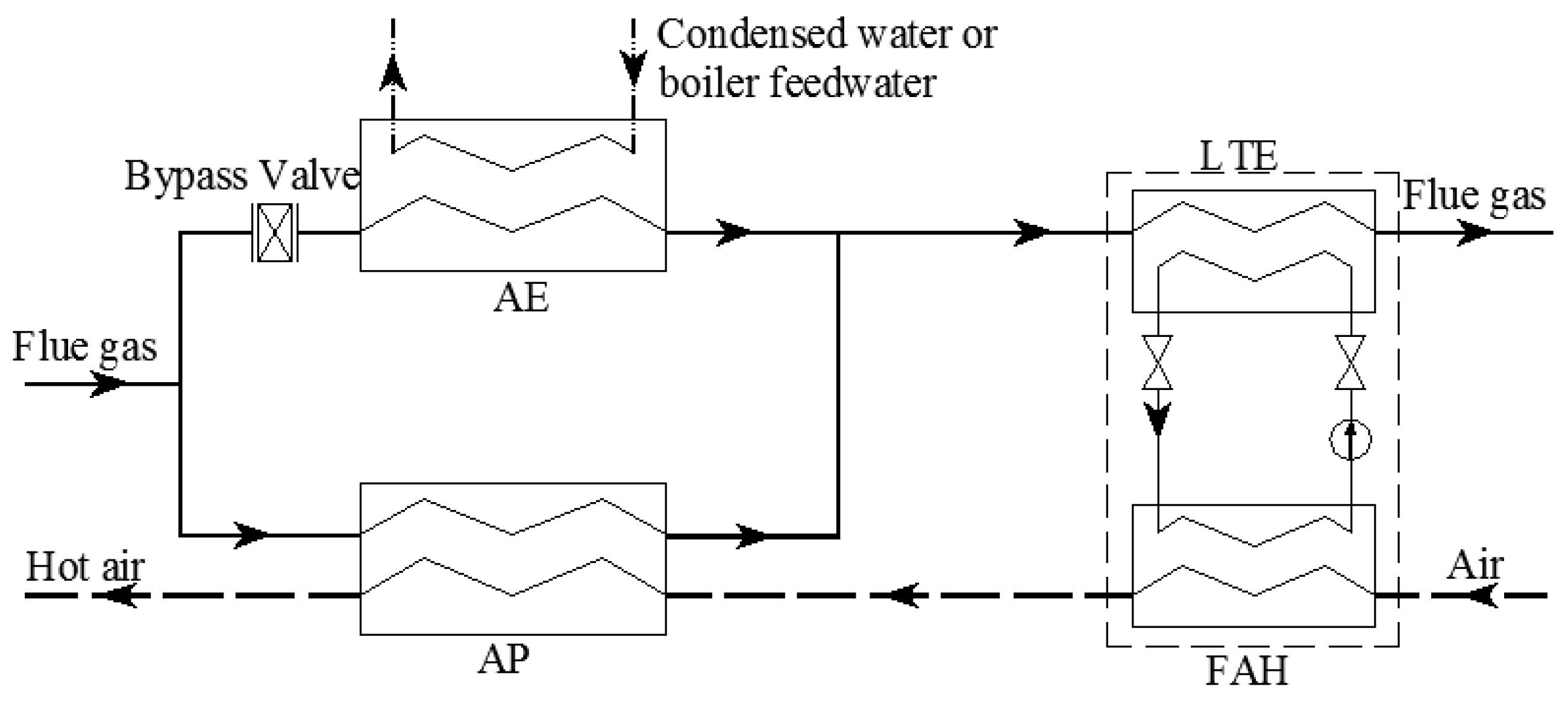

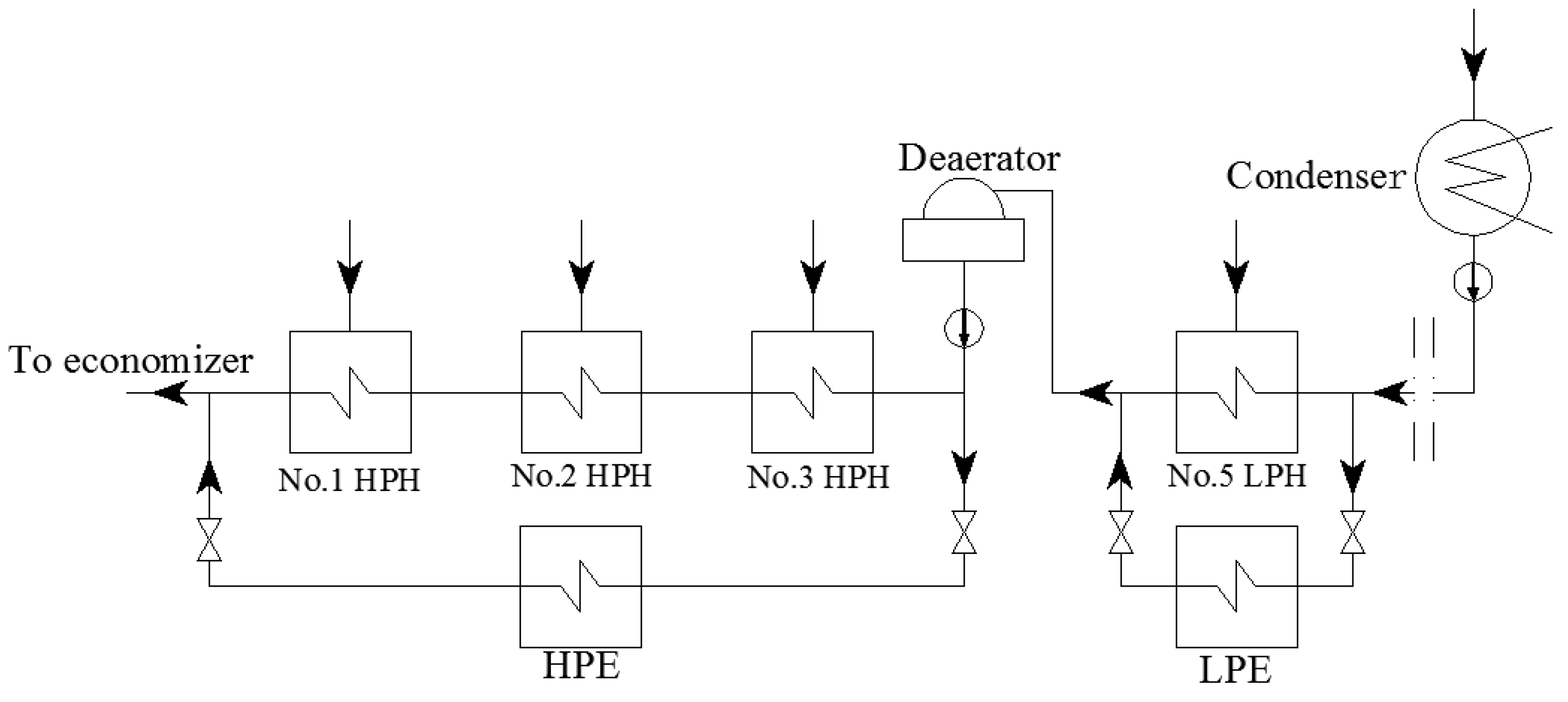

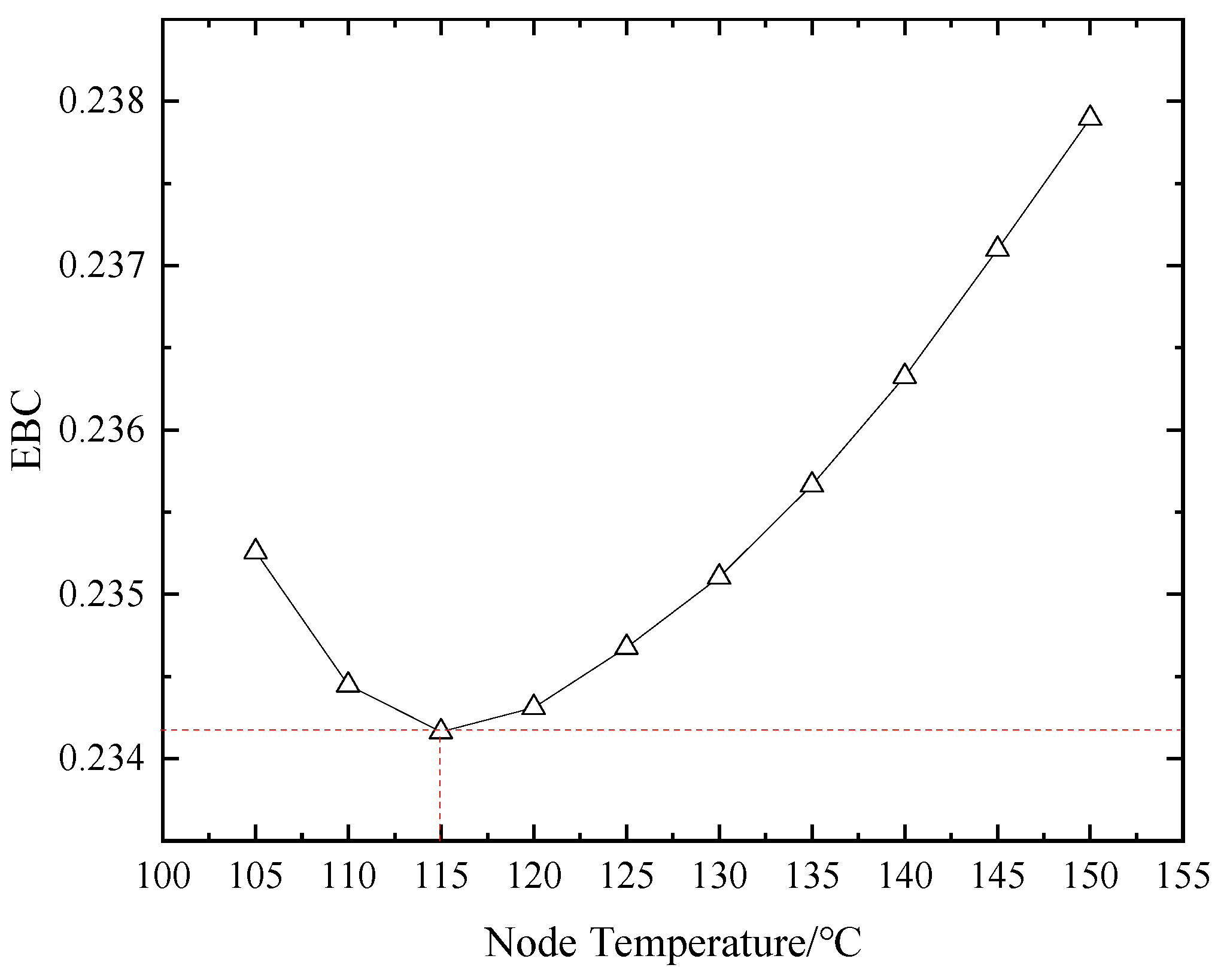
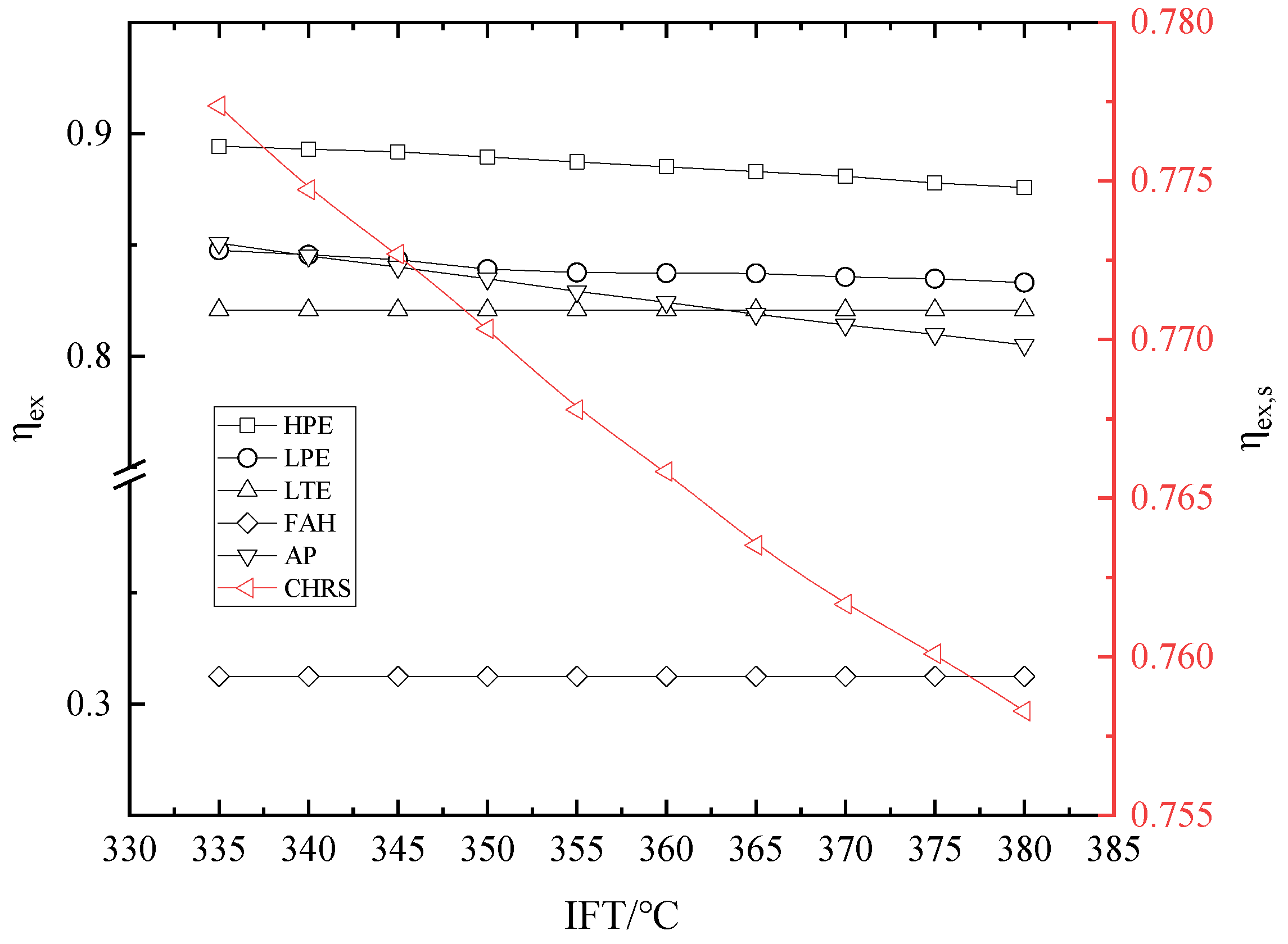

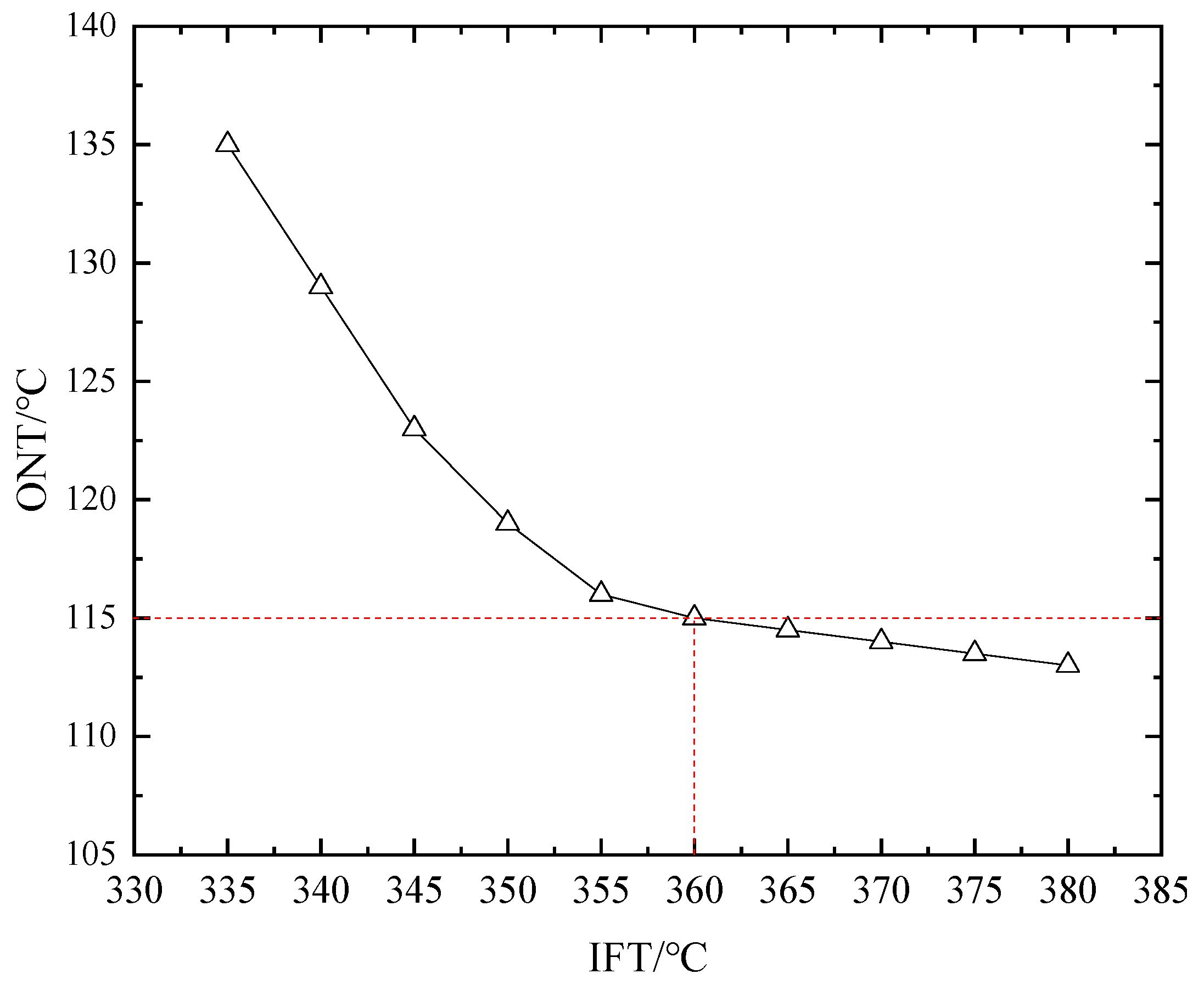
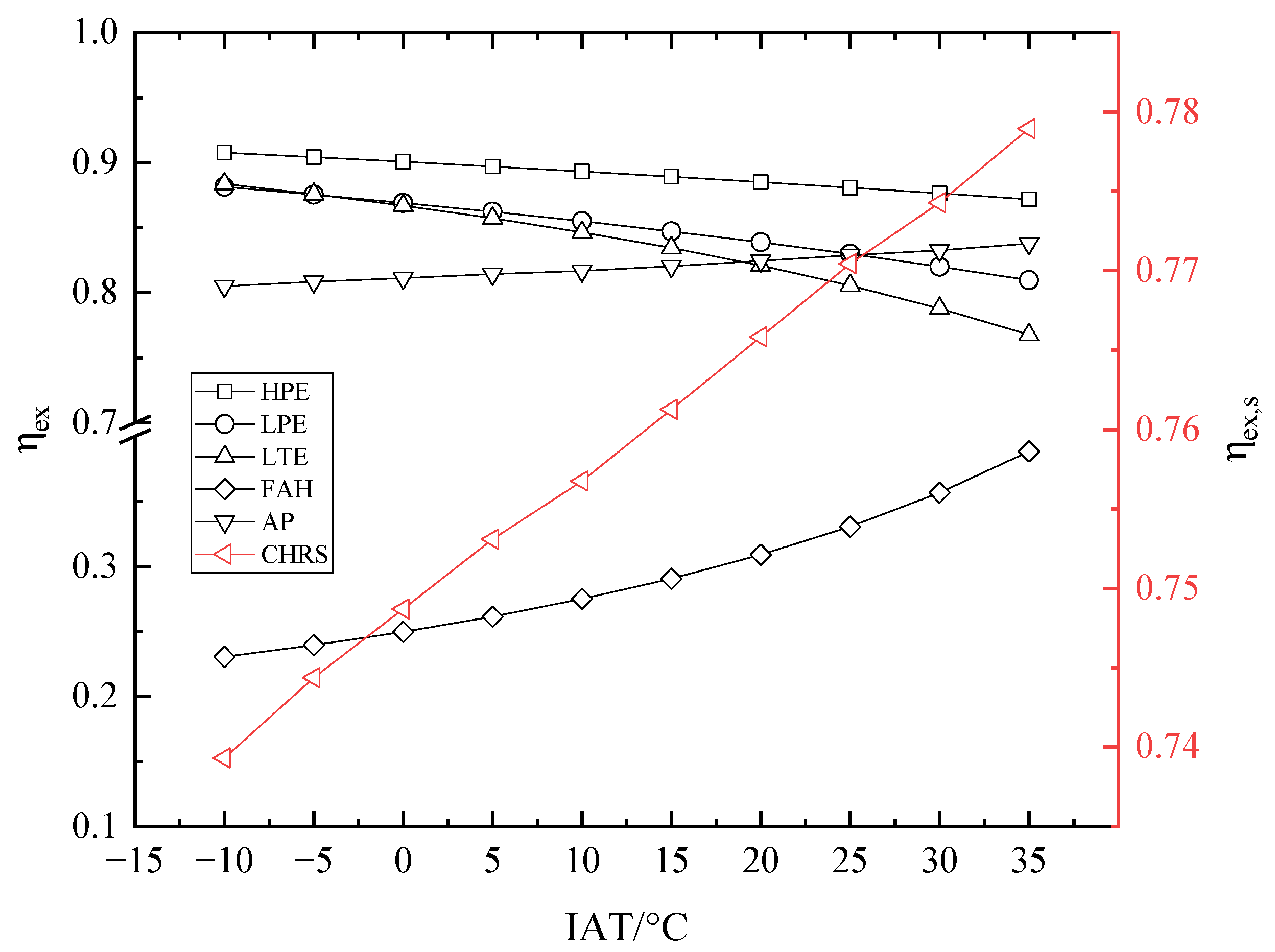
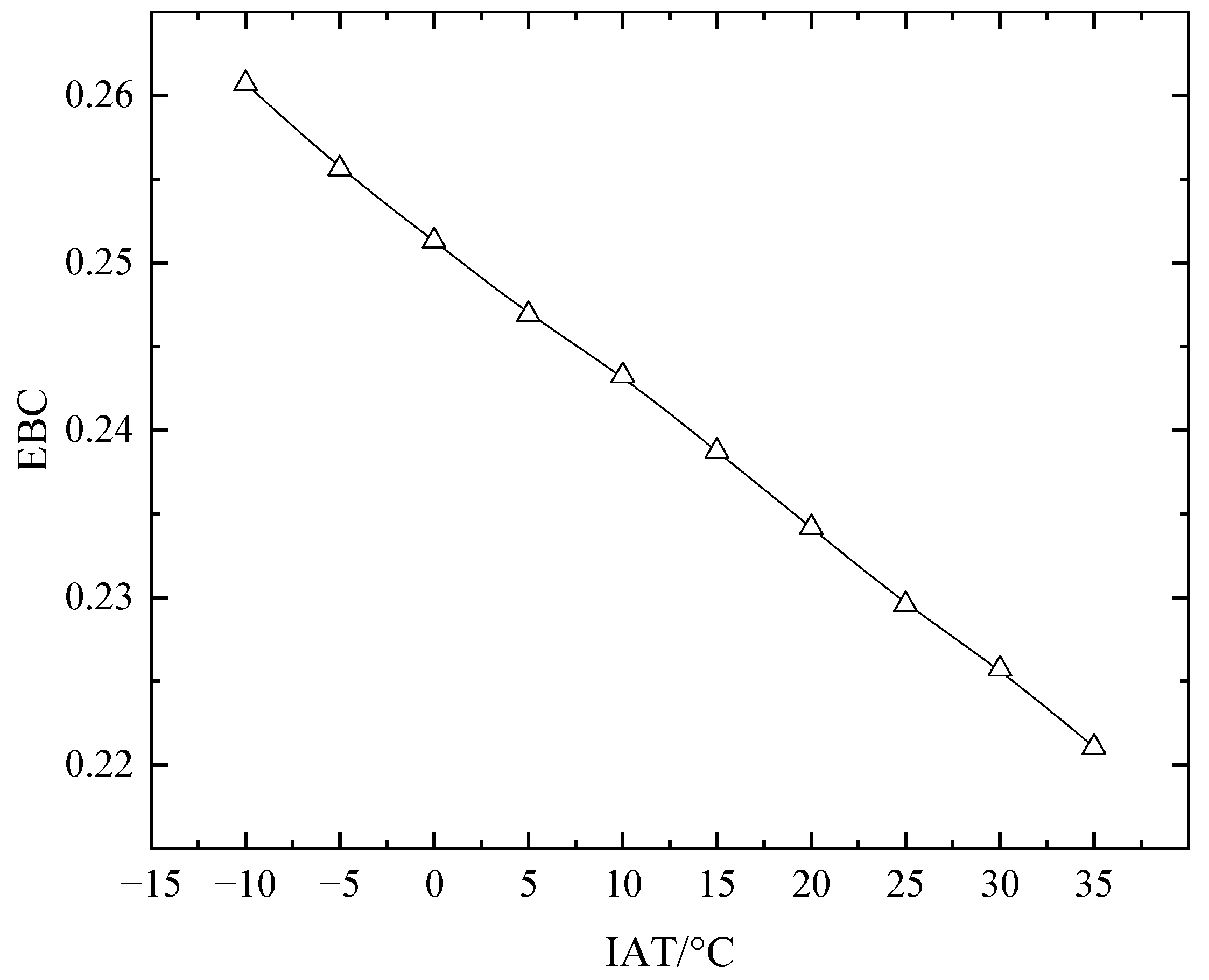
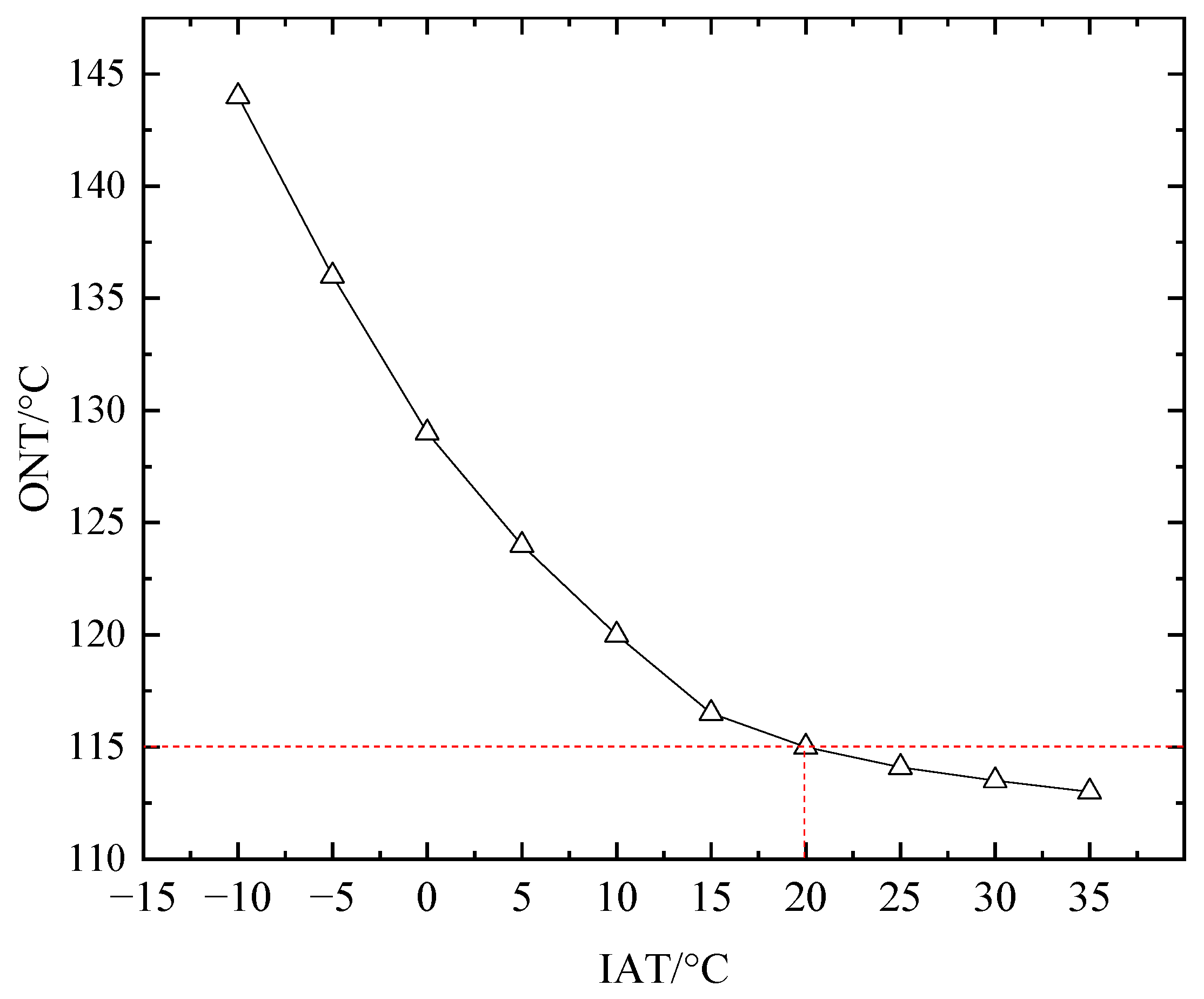
| No. | Item | Symbol | Unit | Value |
|---|---|---|---|---|
| 1 | Moisture | Mt | % | 14.00 |
| 2 | Ash | Aar | % | 11.00 |
| 3 | C | Car | % | 60.31 |
| 4 | H | Har | % | 3.62 |
| 5 | N | Nar | % | 0.70 |
| 6 | O | Oar | % | 9.94 |
| 7 | S | St,ar | % | 0.43 |
| 8 | Low Heating Value | Qnet,v,ar | MJ/kg | 23.765 |
| No. | Item | Unit | Value |
|---|---|---|---|
| 1 | Inlet flus gas temperature of the AP | °C | 360 |
| 2 | Outlet flue gas temperature of LTE | °C | 85 |
| 3 | Inlet air temperature of the FAH | °C | 20 |
| 4 | Outlet air temperature of the AP | °C | 315 |
| 5 | Inlet water temperature of LPE | °C | 96 |
| 6 | Outlet water temperature of LPE | °C | 165 |
| 7 | Inlet water temperature of HPE | °C | 180 |
| 8 | Outlet water temperature of HPE | °C | 275 |
| 9 | Water flow of LPE | t/h | 93 |
| 10 | Water flow of HPE | t/h | 147 |
| 11 | Input power of fans and pumps | MJ/h | 10.32 |
© 2019 by the authors. Licensee MDPI, Basel, Switzerland. This article is an open access article distributed under the terms and conditions of the Creative Commons Attribution (CC BY) license (http://creativecommons.org/licenses/by/4.0/).
Share and Cite
Liu, J.; Sun, F. Node Temperature of the Coupled High-Low Energy Grade Flus Gas Waste Heat Recovery System. Energies 2019, 12, 248. https://doi.org/10.3390/en12020248
Liu J, Sun F. Node Temperature of the Coupled High-Low Energy Grade Flus Gas Waste Heat Recovery System. Energies. 2019; 12(2):248. https://doi.org/10.3390/en12020248
Chicago/Turabian StyleLiu, Jiayou, and Fengzhong Sun. 2019. "Node Temperature of the Coupled High-Low Energy Grade Flus Gas Waste Heat Recovery System" Energies 12, no. 2: 248. https://doi.org/10.3390/en12020248
APA StyleLiu, J., & Sun, F. (2019). Node Temperature of the Coupled High-Low Energy Grade Flus Gas Waste Heat Recovery System. Energies, 12(2), 248. https://doi.org/10.3390/en12020248




